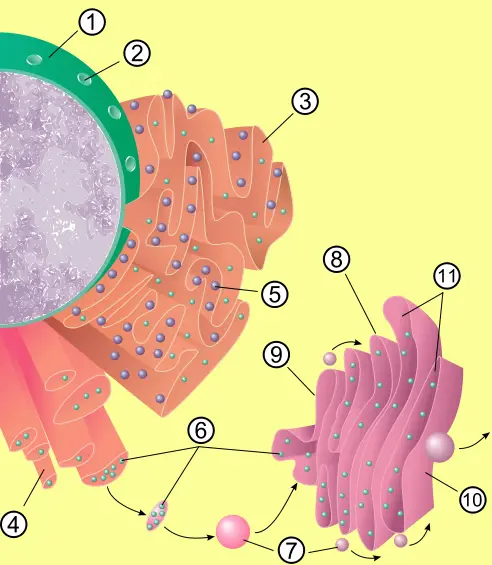The Golgi is composed of membrane-bound stacks known as cisternae (singular: Cisterna). Between four and eight are usually present; however, in someprotists as many as sixty have been observed.[2] Each cisterna comprises a flattened membrane disk, and carries Golgi enzymes to help or to modify cargo proteins that travel through them. They are found in both plant and animal cells.The cisternae stack has four functional regions: The cis-Golgi network, medial-Golgi, endo-Golgi, and trans-Golgi network. Vesicles from the endoplasmic reticulum (via the vesicular-tubular clusters) fuse with the network and subsequently progress through the stack to the trans Golgi network, where they are packaged and sent to the required destination. Each region contains different enzymes which selectively modify the contents depending on where they reside.[3] The cisternae also carry structural proteins important for their maintenance as flattened membranes which stack upon each other.The trans face of the trans-Golgi network is the face from which vesicles leave the Golgi. These vesicles then proceed to later compartments such as thecell membrane, secretory vesicles or late endosomes.
